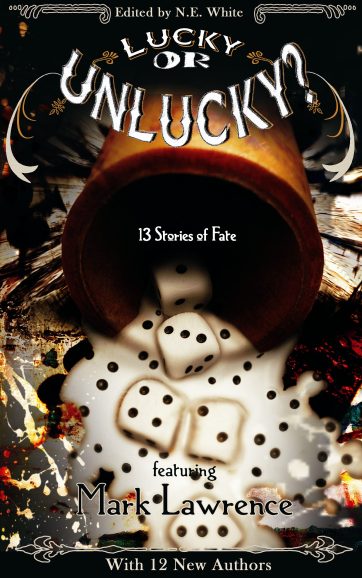December 15, 2014
Me! It’s Me!
The fantastic and talented Andrew Leon Hudson (whose new weird Western, End Trails, will be available soon – excerpt here) has interviewed me at his blog, The Cartesian Theatre. I think interviews like this are hilarious, so I had a bit of fun with it. Hope you do too!
December 1, 2014
Utopia: An Interactive Crisis in Twine…
My interactive Twine story, Utopia, is available here! You’re in charge at the end of the world, so don’t screw it up…
November 19, 2014
How I Became an Editor – the PSG Story
 In the brave new world of the self-publish wild, it is becoming more and more common for people who know nothing – and I mean nothing – about publishing to find themselves in the position of being full-time publishers. It is also perfectly possible for someone to publish a very good book without learning anything about publishing along the way. This is why, mid-summer 2013, I took on the role of editing PSG Publishing‘s first short story anthology, Library of Dreams.
In the brave new world of the self-publish wild, it is becoming more and more common for people who know nothing – and I mean nothing – about publishing to find themselves in the position of being full-time publishers. It is also perfectly possible for someone to publish a very good book without learning anything about publishing along the way. This is why, mid-summer 2013, I took on the role of editing PSG Publishing‘s first short story anthology, Library of Dreams.
I’m an editor, I thought. I have been fixing people’s grammar and spotting typos for, like, ten years! No problem, I thought. No problem.
I don’t know how it had previously escaped my notice that an anthology editor and a copy editor have two very different jobs, but it had. It took some time for the reality of what I had agreed to do to dawn on me. And it didn’t so much “dawn”, gradually over time like the rising sun, as it swamped me, like a flash-flood.
PSG’s project leads chose a theme and a charity, and I put together submission guidelines. Stories began to trickle in, manageably at first. Many of the writers were going through the submissions process for the first time, so I fielded questions and lend encouragement. Maya Starling put together a book cover that was so slick, we instantly looked more professional than publishers who’ve been in the game for years. Things were quiet and under control until the end of the summer.
Then came the deadline. I had 14 stories, but not all of them were ready to go to print. There were revisions to make, content to clarify, changes to finalize. Some of the newer writers had never used Track Changes, nor done a substantial revision. In one case, I asked for a revision and got an entirely different story back. One writer pulled out at the last minute. One still hasn’t submitted his contract. I gave us all the month to get the stories ready to be copy-edited. We missed my deadline by two weeks.
By the fall of 2013 I had coached, copy-edited, revised, and copy-edited again 14 stories and my job had only just begun. Sink or swim, self.
I swam.
I learned enough legalese to write contracts. I picked fonts and dingbats. I agonized over what order to put the stories in, laid it all out in rough, and then changed my mind about everything. I signed a contract with LitWorld and applied for an ITIN – an American tax ID. Maya did all the heavy lifting of formatting the book for Createspace, Kindle and Smashwords, but then we had to proofread all three editions again – twice.
By the time we released the book on December 15th, 2013, I had been working on it full-time for three months. And it was worth every. Single. Minute. Library of Dreams is clean, beautiful, and best of all – good reading.
 When PSG fielded the idea of doing a second anthology this year, I jumped at it. I had the skill-set now – I was an editor. Not just the kind that fixes your spelling – the other kind. An Editor.
When PSG fielded the idea of doing a second anthology this year, I jumped at it. I had the skill-set now – I was an editor. Not just the kind that fixes your spelling – the other kind. An Editor.
If last year was a flash flood that nearly drowned me, this year was a trans-Atlantic swim for which I was trained and fit. Oh, it was hard. Everybody at PSG – especially Maya Starling, Yzabel Ginsberg, Ang Thomas, Tim McFarlane, Kim Fry, Laura Perry, and ALL our authors – worked their butts off to get the book together in a way we could all be proud of. But we were ready this time and I think it shows.
Chamber of Music launched on Friday, November 14th 2014 – a full month earlier than last year – and is now available in paperback and ebook from Amazon, Smashwords, and a host of other online sources. Proceeds from its sales will be donated to Musicians Without Borders. I hope you’ll have a look!
October 6, 2014
A Real Writer

The key to being a Real Writer is to bull right through stuff like this.
Two years ago, I decided I was going to be a real writer.
This was the third or fourth time I had made the same decision. When I was 8, I wrote my first “book”, a complete retelling of the Princess Bride, starring me as the Man in Black, minus any princesses. In high school, I decided I was serious enough to fill a proper portfolio, attending several “Young Author’s Workshops” whose mandate and sponsorship still remains a bit vague to me – though I did meet Michael Ondaatje. After running away from home, I came back to graduate high school and wrote on a slip of paper that I intended to “write the Great Canadian Novel” after graduation. They didn’t read that part out.
I did NaNoWriMo a few times between 2004 and 2007. I entered the Three Day Novel Writing Contest. I started writing mildly-successful erotica. I never finished anything. I was flailing, dabbling. I picked up and dropped writing projects at the same speed that I cycled through jobs, boyfriends, apartment. I was not a real writer – I was a dilettante.
When I got pregnant in 2007, I decided it was time to get serious. There was every chance I wasn’t going to be able to go back to work when my maternity leave was up and I needed something to fall back on. I pulled up my NaNoWriMo novel from 2004 and vowed to finish it. It was boring, but I had to do it to prove that I could. It sucked, but I did it. I finished the novel and put it straight into a trunk. I didn’t write another thing for five years.
Two years ago, something changed. I was 32, had two kids, a steady partner and job. I was “happy”, if bored. All of the flashes of glory and glamour I had enjoyed over the past 15 years had amounted to nothing. I had always been able to shine at whatever I did, but had never had the gumption to stick with anything. It was easy to be good enough at something to get your foot in the door, but getting great at something was harder to figure out. I was too flighty, too anxious, too easily distracted, and too easily bored. Of course I could write. I was even good at it. But being a real writer was something else entirely.
Two years ago I decided I would stick with it. No matter how bad I thought I was. No matter how many rejections I got. No matter how often my beta readers told me they “didn’t get it”. No matter how many long, dead hours I spent on words that would never see the light of day, that had none of the instant gratification I was used to. No matter how many other opportunities came my way which seemed shiny and new and exciting. I was going to learn focus and tenacity.
I had always thought of “hard work” as “work on the difficult setting,” which I could conveniently circumvent by being talented enough that it wasn’t very hard at all. But it isn’t. “Hard work” is doing something you don’t want to do. It means forcing yourself through whatever makes you sweat. For me, that was staying put. It was getting up again and again and doing the same thing I had done the day before, without succumbing to the need for change, the thrill of novelty. It meant trying again and again. Writing more and more. Every day. Forever, if that’s how long it took.
It took two years. I am pleased to be able to say that my short story, “La Héron”, has been accepted for publication by C.C. Finlay for his guest-edited issue of Fantasy & Science Fiction. My first sale at pro rates, and the first goal post I had set for myself.
Now it’s head back down to the grind. It took me a stubborn 34 years, but I think I’ve learned my first lesson. The only real trick is to keep at it. One day after another, one word after another.
I’m a real writer now.
August 21, 2014
The Adventures of Morley & Boots!
One of my favourite short stories is now live at The After Action Report! Like space westerns? Quantum poaching? Space whales? Have I got the story for you! Check out ‘The Adventures of Morley and Boots”.
June 13, 2014
“Fold” Free Online!
My story “Fold” from Lucky or Unlucky? 13 Stories of Fate has been made available for free online at SFFWorld as of this morning! If you’ve always wondered what kind of fiction I write but didn’t want to spend $0.99 to find out, here’s your chance!
Or you could buy the whole anthology, with proceeds going to the UK Children’s Hospice…
April 25, 2014
A Blog Hop!
Sometimes a girl just doesn’t know what to blog about, when out of the wide, limitless blue comes a friendly blogger-writer-friend with a golden baton that they will pass on to you, inscribed not only with the solution to all of your blogging problems, but permission to talk about yourself.

The reclusive bookseller in her natural habitat.
Really? May I? Simon McNeil (author of The Black Trillium, forthcoming from Brain Lag Publishing) says yes! It goes like this: because I have been tagged by Simon, I will answer the questions he has laid out for me. At the end, I will pass the baton to three more writers, who will answer similar writerly-questions which I will ask them. The pedigree of this blog hop is a good one: Simon was tagged by Adam Shaftoe, Adam by Matt Moore, Matt by Marie Bilodeau, Marie by Eileen Bell…. it’s possible this goes back to the birth of the universe if you want to follow it there, and Godspeed to you if you do.
With no further ado, here are the questions Simon put to me!
1) What book most affected your decision to begin writing? Why that book?
Like a lot of writers, I was one of those who decided to “be a writer” when I was maybe 7 years old, so I don’t have the clearest recollection of what story might have inspired this choice, if there was one. One of my first “long” works was a “sequel” to The Princess Bride (actually just the movie told over again, only starring me as the Dread Pirate Roberts’ BFF and co-adventurer) which I wrote when I was 8.
When I ran away from home and eventually enrolled in Celtic Studies in university, though, it was because of Charles de Lint. His Newford books in particular. I wanted to live those – writing something similar came a close second. I wrote dozens of first chapters that never went anywhere. Living them was a much greater success – but that’s another story.
I didn’t REALLY finish a book until they invented NaNoWriMo and I decided to jump in and pull a Harry Potter. I wanted to write meaningful, socially-conscious kid’s fantasy with a strong political/ecological message. And I think I did. I don’t know that this means Harry Potter got me seriously writing, though. It was a combination of things.
2) How do you deal with difficult protagonists in your writing and reading? Is it possible to bridge the gap between “I don’t like them” and “I don’t care about them?”
I tend to work with a close, limited POV with my protagonists, and the reader gets a lot of interior dialogue. My hope is that even if you don’t especially like the narrator, you will understand her. She makes her fears, motivations, justifications and expectations abundantly clear.
I don’t use difficult protagonists, though, unless they have a flaw which is meant to expose a particular point I am trying to make with the piece. You don’t need to like them in order to see how their politics/fears/hubris plays out in the world. I don’t ask my reader to connect with the character all the time – just to think about what the existence of people like them means to the world.
3) Pantser or plotter? Explain why.
I used to be a pantser, I am now a plotter. Nothing will give me worse writer’s block than coming to a point in the story where I realize it is going nowhere, or where trying to tie together all the threads will result in an enormous, ugly knot.
My weakness as a writer is in plotting – deciding what happens. I am good with the abstracts: settings, ideas, characters and motivations. I often know more about my world’s biosphere than I do the story’s plot direction before I start. Without plotting, my stories wound up just being the meandering adventures of interesting characters. They’d discover things, go places, have many meals and intelligent conversations – but none of it ever went anywhere and it didn’t culminate into anything. It didn’t mean anything. That thing most writers have, where they think “wouldn’t it be cool if this happened?” I don’t have a good sense of that. So I need to make sure I sketch out my story arc ahead of time.
4) Write a pitch for your favourite story you never wrote.
Okay, the following is the pitch for a novel I did start, and wrote the first four chapters of… but I don’t think I’ll ever be going back. Still, I had so much fun writing it.
“Seven years after the magii of Al’Tahj opened the first portal to Jammatan, the ocean world’s secrets are still buried. Thousand of islands hide ancient ruins, sophisticated artifice and complex messages from a long-dead civilization, now reclaimed by the jungle, the ocean, and the huge creatures that have come to dominate the world.
This is a world that rewards the brave, the reckless, and the ambitious. Those who cross through the portal and stake their claims on this new world grow rich, if they don’t get killed.
The Gloriana is bound for the open seas led by Captain Aziza Dualeh, who has a near-mystical talent for attracting, and conquering, trouble. Among her crew is the artificer Taban Haji Kaar, planted by the Caliphate of Al’Tahj to carry out a mission known only to him – a mission Taban finds himself increasingly unwilling to complete. Out on the frontier, away from the comfort and politics of Al’Tahj, Taban finds himself distracted by, of all things, his heart…”
*
Tag! I’m sending you next in the direction of Rati Mehrotra, Mari Adkins & C.M. Rosens! All three women have some fantastic work on the horizon, so I hope you’ll check them out.
April 15, 2014
Five Great Heroes for Small Girls
Navigating media with a young girl can be a disheartening experience. If you think representation matters, like I do, you’re constantly on the lookout for smart, confident, diverse girls represented in interesting ways. They can be hard to find, but not impossible. Six years in, I have built a small but sturdy library.
Pippi Longstocking
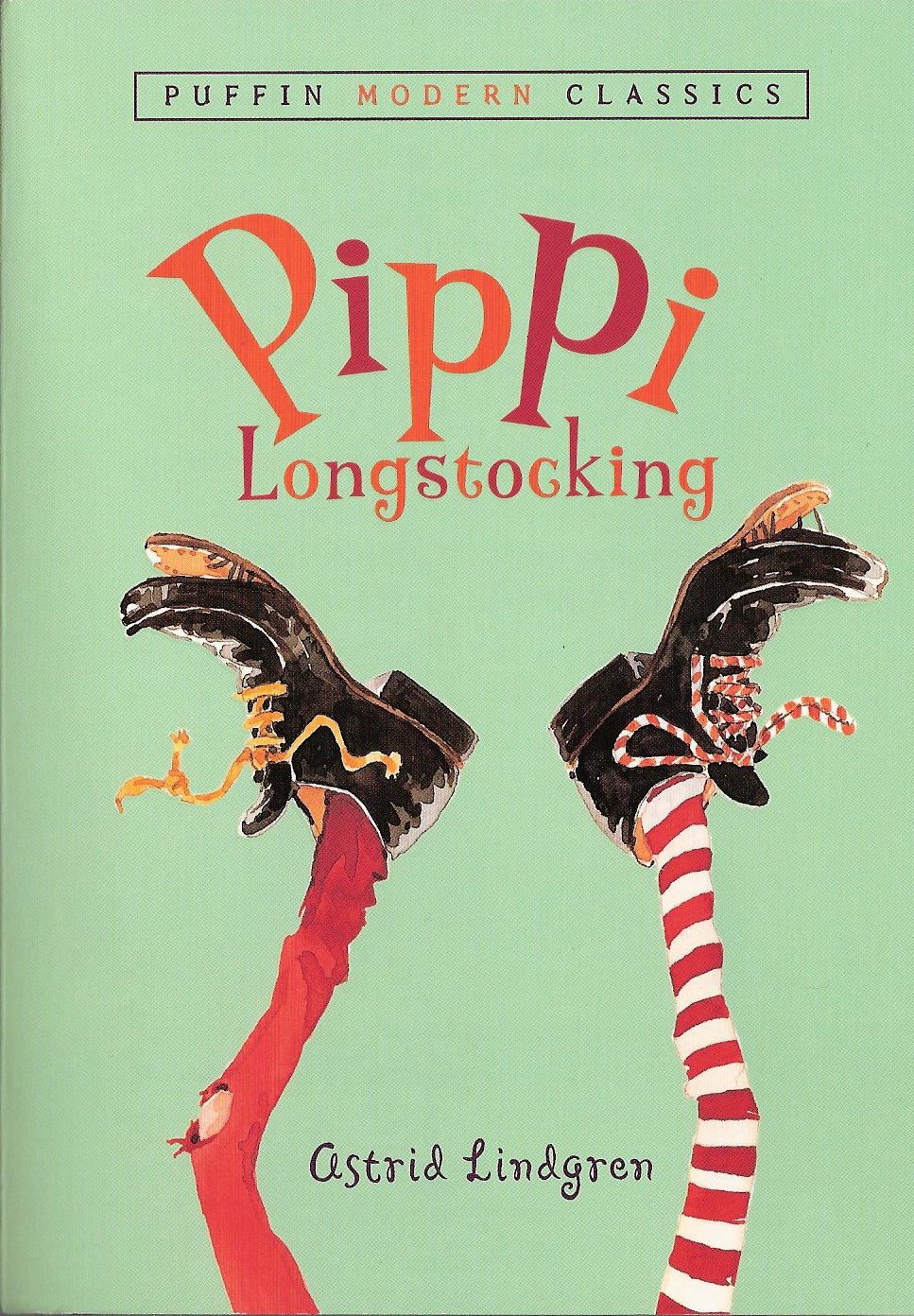 Pippi Longstocking, the hero of Astrid Lindgren’s eponymous books, was my #1 most favourite female hero for kids before I actually had kids. There were very few characters I, personally, identified with more when I was eight. Pippi lives alone with a horse and a monkey. She has incredible super-strength, which is neat, but not nearly as enticing as her independence. She has a father somewhere, distantly, who is a buccaneer captain. Pippi isn’t bothered by her father’s absence since he is alive and merely busy having adventures, so Pippi’s feral independence isn’t darkened in any way by loss or grief. She just straight up gets to do anything she likes, and does.
Pippi Longstocking, the hero of Astrid Lindgren’s eponymous books, was my #1 most favourite female hero for kids before I actually had kids. There were very few characters I, personally, identified with more when I was eight. Pippi lives alone with a horse and a monkey. She has incredible super-strength, which is neat, but not nearly as enticing as her independence. She has a father somewhere, distantly, who is a buccaneer captain. Pippi isn’t bothered by her father’s absence since he is alive and merely busy having adventures, so Pippi’s feral independence isn’t darkened in any way by loss or grief. She just straight up gets to do anything she likes, and does.
Mosca Mye
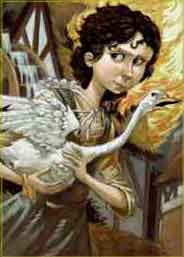 Mosca Mye is the hero of Frances Hardinge’s incredible books, Fly By Night and Twilight Robbery. Another lone, independent 12-year-old, Mosca does have a darker past, and it adds a definite edge to her character. Razor-sharp, Mosca escapes her dull relatives after sort-of-accidentally-on-purpose burning her uncle’s barn to the ground and freeing the loquacious conman, Eponymous Clent, who comes to be her partner in crime. She also has a goose named Saracen, who is the fiercest creature in all the world. Mosca’s not old enough to have lost a childlike innocence, despite her street smarts, and she survives all sorts of dangerous encounters on wit alone. Bonus points for major themes of literacy!
Mosca Mye is the hero of Frances Hardinge’s incredible books, Fly By Night and Twilight Robbery. Another lone, independent 12-year-old, Mosca does have a darker past, and it adds a definite edge to her character. Razor-sharp, Mosca escapes her dull relatives after sort-of-accidentally-on-purpose burning her uncle’s barn to the ground and freeing the loquacious conman, Eponymous Clent, who comes to be her partner in crime. She also has a goose named Saracen, who is the fiercest creature in all the world. Mosca’s not old enough to have lost a childlike innocence, despite her street smarts, and she survives all sorts of dangerous encounters on wit alone. Bonus points for major themes of literacy!
Zahrah the Windseeker
 I’m partial to bold, independent heroes, but my elder daughter is a different creature. Adventures are scary to her, even when they come out well in the end, and so she instantly attached herself to Nnedi Okorafor-Mbachu’s Zahrah the Windseeker (winner of the 2008 Wole Soyinka Prize for Literature in Africa). Zahrah’s a shy, contemplative 13-year-old who is absolutely reluctant to go charging off into danger. She needs to think, internalize and understand – and occasionally be given a final firm shove. But she has strength of character and wisdom beyond her years, not to mention SHE CAN FLY, which is obviously amazing.
I’m partial to bold, independent heroes, but my elder daughter is a different creature. Adventures are scary to her, even when they come out well in the end, and so she instantly attached herself to Nnedi Okorafor-Mbachu’s Zahrah the Windseeker (winner of the 2008 Wole Soyinka Prize for Literature in Africa). Zahrah’s a shy, contemplative 13-year-old who is absolutely reluctant to go charging off into danger. She needs to think, internalize and understand – and occasionally be given a final firm shove. But she has strength of character and wisdom beyond her years, not to mention SHE CAN FLY, which is obviously amazing.
Kiki
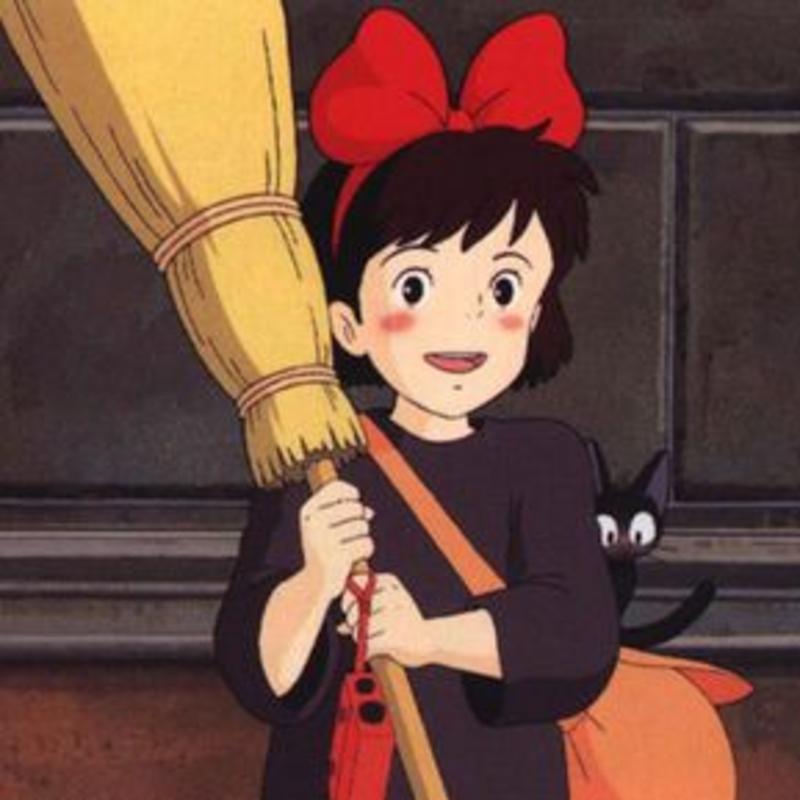 It would be easy to make this a list of characters from Hayao Miyazaki’s Studio Ghibli films, but let’s stick to one. Kiki is probably the strongest of Miyazaki’s characters. The film is about her and her growth as a character, and very little else. But it’s enough. Kiki’s independent, but less sure than some of the more assertive characters. She’s a witch, but she doesn’t know what her special skill is yet, and she quickly learns she isn’t as rich or fancy as other girls in the big city she has chosen to live in. Her fears and struggles are terrible relatable, though Kiki never sacrifices her fundamental goodness. Though she’s almost a young woman, the film’s lack of a “bad guy” makes it wonderful for kids of any age.
It would be easy to make this a list of characters from Hayao Miyazaki’s Studio Ghibli films, but let’s stick to one. Kiki is probably the strongest of Miyazaki’s characters. The film is about her and her growth as a character, and very little else. But it’s enough. Kiki’s independent, but less sure than some of the more assertive characters. She’s a witch, but she doesn’t know what her special skill is yet, and she quickly learns she isn’t as rich or fancy as other girls in the big city she has chosen to live in. Her fears and struggles are terrible relatable, though Kiki never sacrifices her fundamental goodness. Though she’s almost a young woman, the film’s lack of a “bad guy” makes it wonderful for kids of any age.
Zita the Space Girl
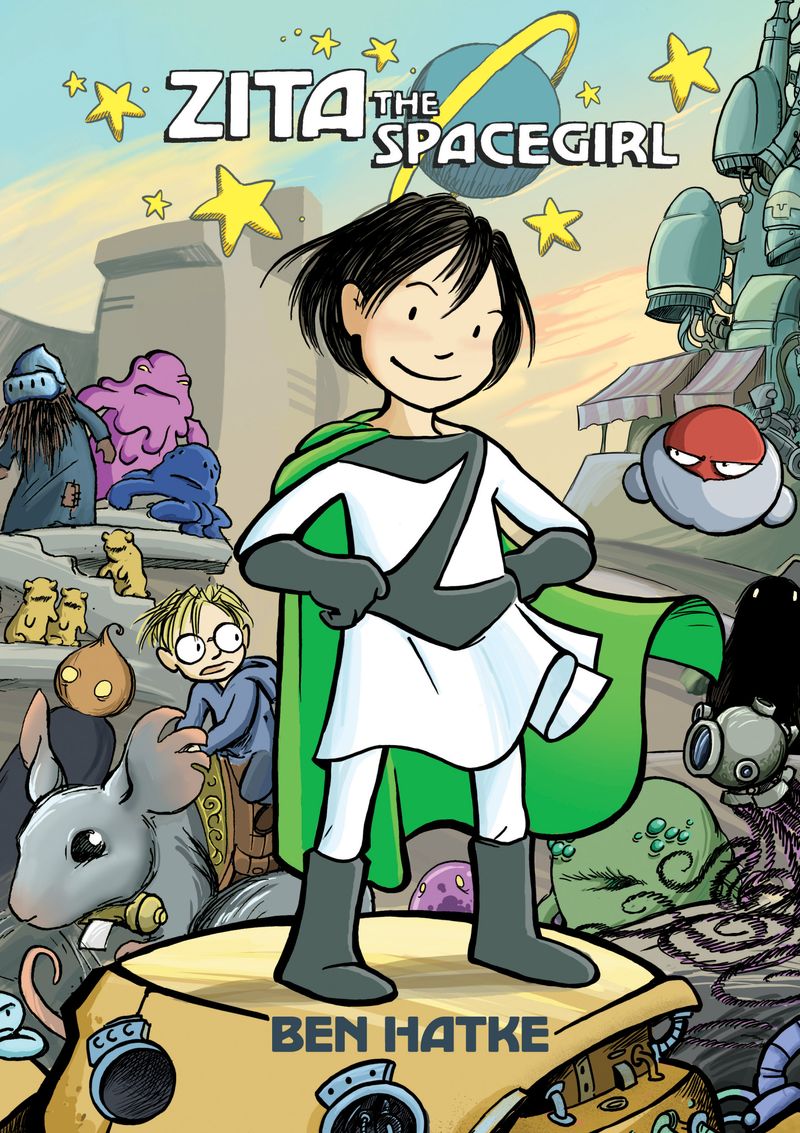 Ben Hatke’s Zita the Spacegirl (along with the sequels Legends of Zita the Spacegirl and The Return of Zita the Spacegirl) has pretty much everything you can ask for in space opera, pared down to the innocent scale of a young girl. Zita has arrived on a strange planet via a portal triggered by her best friend. He’s abducted: she dives through to rescue him. Instantly she’s thrown into huge, galaxy-spanning plots, con artistry, large scale rescue missions, desert crossings, overthrowing governments, salvaging robots, riding giant mice, standing up for economic refugees – have I missed anything? Probably – Zita almost has too much going on, but this never bothered my kids. Zita’s powers are pluck and the moral high ground – and it works.
Ben Hatke’s Zita the Spacegirl (along with the sequels Legends of Zita the Spacegirl and The Return of Zita the Spacegirl) has pretty much everything you can ask for in space opera, pared down to the innocent scale of a young girl. Zita has arrived on a strange planet via a portal triggered by her best friend. He’s abducted: she dives through to rescue him. Instantly she’s thrown into huge, galaxy-spanning plots, con artistry, large scale rescue missions, desert crossings, overthrowing governments, salvaging robots, riding giant mice, standing up for economic refugees – have I missed anything? Probably – Zita almost has too much going on, but this never bothered my kids. Zita’s powers are pluck and the moral high ground – and it works.
*
I’ve had a thing or two to say about good representations for young girls before, and my essay “The Princess Problem” is now available as part of Jim C. Hines’ Invisible: Personal Essays on Representation in SF/F. Proceeds from the sale of the book will be donated to Con or Bust, a fund administered through the Carl Brandon Society that helps get people of color/non-white people to attend SFF conventions. Take a look! Excellent work within.
April 4, 2014
How To Get My Money – Periodical Edition
I read a lot of periodicals. I have subscriptions to fifteen magazines or journals, and buy individual issues of countless others. I try to at least look at each one, even if I don’t always read them cover to cover. I feel as if I might have some grounds for talking a bit about why people might read your publication, and why people might not.
Here is a step by step guide to how I will approach your publication, as a reader; what will convince me to read and what will drive me away.
A shiny new ‘zine appears!
Yay! I click through to the website. Oooh, looks interesting.
Can I buy an issue to read on my ereader?
If I can, I will buy it right away. I might hesitate if the only retailer is Amazon, Kobo, Barnes and Noble or some other giant. If it’s direct, Weightless Books or Gumroad, I won’t even stop to think. I will BUY. I will read! Horray!
Can I subscribe to an e-edition?
If the ‘zine has a good track record or speaks directly to my soul, I will subscribe without too much thought. After all, I spend $20 on a book, why would I balk at spending the same amount of money to get 4-12 issues emailed directly to me? I love esubscriptions. This is why I have six of them.
Can I buy a paper copy?
Okay, so not everyone is putting together digital ‘zines. That’s cool. I like paper better anyway. I will buy physical copies if the total cost of the issue plus shipping is under $20. I will likely subscribe if it is something I really love. I love mail. This is why I have nine physical subscriptions.
Does it have an awesome mobile site?
Once I cannot buy an issue or subscription for comfortable reading, things get tricky. I used to read on my phone, but this resulted in a rapid decline of my eyesight, headaches, and general discomfort. I can read in short bursts, but I will not curl up with an issue on my phone.
If I have to read something on my phone, it had better be optimized for mobile reading. The text size has to be big enough, or adjustable. The menus must be simple. There can’t be ads or flash graphics reloading things every thirty seconds. Preferably, the text should take up the entire screen, so I don’t have to zoom (and end up with scrolling issues).
Some ‘zines have got perfectly serviceable mobile reading experiences (Apex Magazine and Ideomancer do good jobs). I tend to open these ‘zines in web browsers and leave them there for weeks. Maybe I will get to them, maybe I won’t.
Do I have to read it on an old-school website?
I probably won’t read. It’s too hard. It’s uncomfortable. I will only bother if a specific story has been recommended to me so many times that I can’t look away.
I mean, I get it. It’s free. You’re all working for free. But it is because it is free that I’m not as likely to read if you make it hard for me. I paid for my other magazines. I’m invested. Given the choice between reading something that hurts my eyes online, and reading something I paid for on my Kobo, I will do the latter every time. And I do have to choose – 15 subscriptions, after all. I can’t read everything.
A quick note on Kickstarters:
I acquired a large number of my subscriptions through Kickstarter. If you are running a Kickstarter for your periodical, it is an early subscription campaign. If you are running a Kickstarter for a periodical and your core tier is not “SUBSCRIPTION”, then you are doing it wrong. Any Kickstarter campaign, whatever it is for, should sell, fundamentally, the thing you are making. Probably for cheap, like an early bird special. It is dead easy for a supporter to see that $15-$20 tier and say, yah, I’ll throw you a twenty. And I get a subscription, which would cost me $22 if I waited! Good deal! This is where most of your supporters will lie. Your subscribers too. You will have contact with these supporters for the rest of the year. They are your core constituants.
Tiers full of postcards, prints, signed books, Tuckerizations, critiques… these are cool, but this isn’t what you are selling. This is the extra stuff, the honey that sweetens the pot of Zine Tea. If I have to pay ONE HUNDRED DOLLARS to get the equivalent of a subscription, you have missed the point. I want to love your product. It looks like a cool product. Please sell your product.
A quick note on free ‘zines who do everything right:
You produce a great product, you make ezine subscriptions available and you do it all for free. You are AMAZING. But I still want to give you my money, and you are making it hard by giving it all away. I know, I could just click the PayPal button. I probably won’t. I will procrastinate. I will think, “I should throw some money in the tip jar some day.” I won’t get around to it.
It takes very little “extra” to get me to pay in. Release the paid material a week ahead of the free edition, as Beneath Ceaseless Skies does. Maybe include an extra story in the e-edition. Send me a t-shirt, I don’t know. But do something to fish for that money. You might think you don’t want it, but you do. Give it all to your featured author if you feel bad pocketing it. Buy your slushies Starbucks gift cards. But do take the offered money and put it to work. If you don’t, somebody else will, and that person might not be as awesome as you.
So, how about you? What makes you read a ‘zine? Leave a comment even just to say hi!
February 13, 2014
Representing Daddy
Because my children are very small, they do not, at this stage, look for themselves in books. Their brains don’t work like that yet – they take themselves for granted, since they are the centre of the universe, and they look instead for the people they see around them. Oonagh, who is two, likes to find Maggie, who is five. They point out when characters look like Mommy. And they get very special delight out of finding Daddy.
Not that it happens very often. Daddy doesn’t turn up in books very often, and when he does, he’s not the guy you want to root for. Among the characters my kids have identified as “daddy”:

Jafar, from Aladdin
.jpg)
Scar, from The Lion King
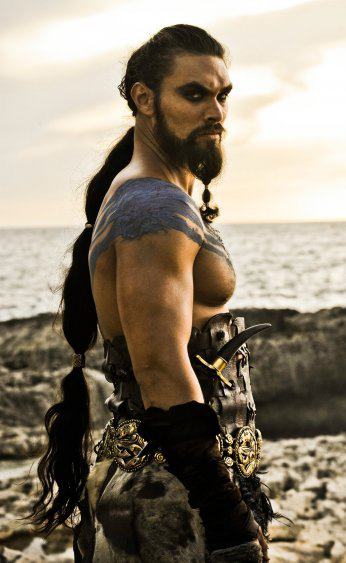
Mommy wishes, kid.
My children are generally perplexed by the daddies they see in books, who, at best, they identify as being their Uncle Gordon. They tend to be pudgy, pale, balding fellows who look like this:

I am a big believer that representation in media matters, especially to children. Kids learn from books. That’s why we read to them so willingly. I am constantly on the lookout not just for books that represent the kids in diverse ways, but the families as well. Kids can learn to be ashamed of or embarrassed by their family situation at a shockingly young age, and I’m keen to head that off at the pass. Your daddy isn’t a bad guy, girls, no matter what Disney likes to say.

I have recommended Jill Thompson’s Magic Trixie here before, but it has recently re-emerged as a favourite in this house. Maggie recommended it for Keep Toronto Reading two years ago.
I have a lot of reasons for loving Magic Trixie, as a geeky parent. It’s a graphic novel, a form intrinsic to my childrens’ nerd heritage. It features cool, quirky children depicted in age-appropriate ways, unlike the similar-but-actually-completely-reprehensible Monster High brand. It’s funny, readable and beautiful. It shows a variety of (admittedly heteronormative) families of many colours and, best of all, the daddy looks like Daddy.
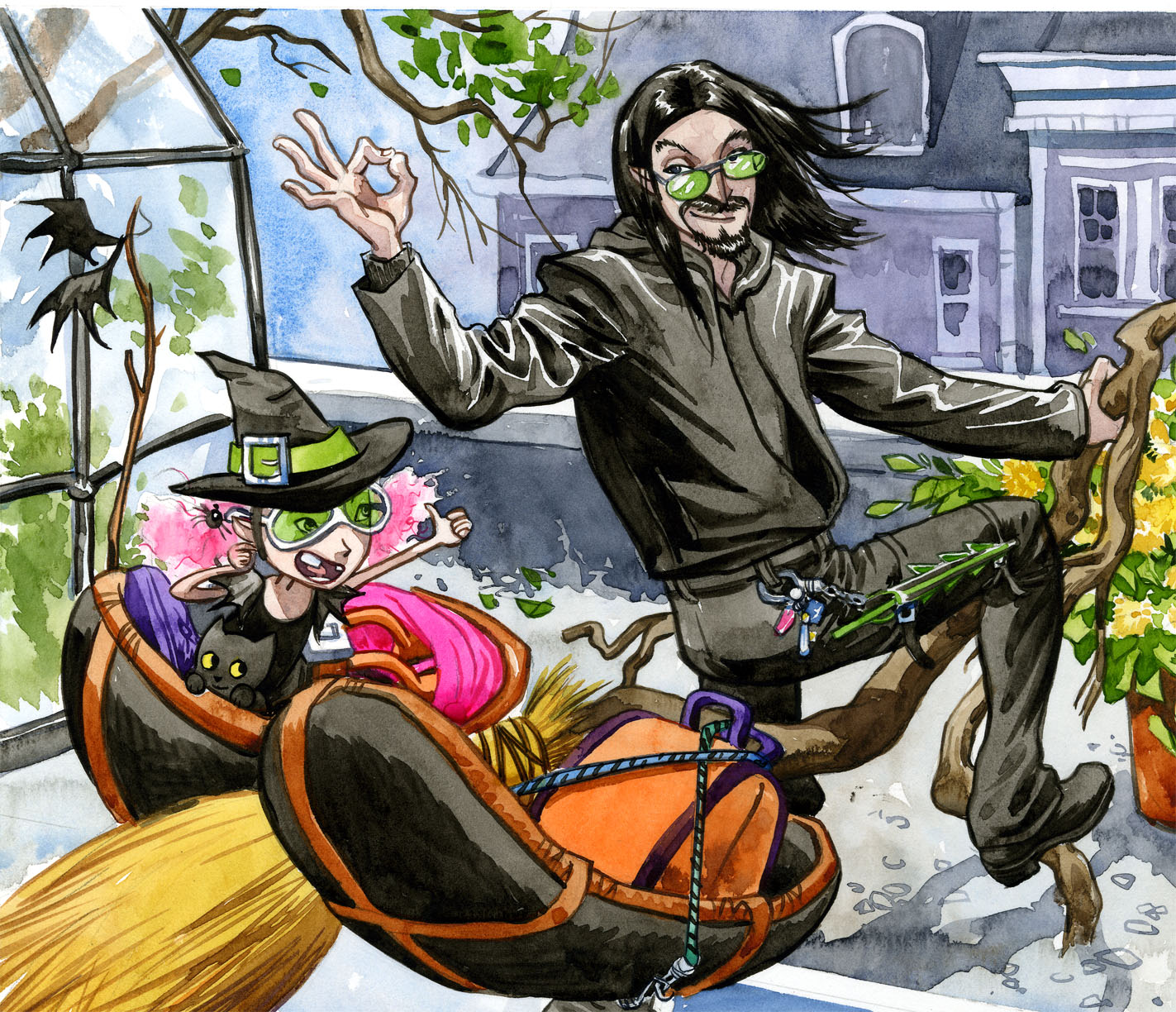
Though, real Daddy does not, sadly, ride a bitchin’ broom.
Fighting the tide of crummy media representation is a huge chore, made harder if you have specific characters you are looking for in your stories. Kids don’t need to see their family everywhere, but when they see families depicted in only one way over and over – they get the message. We’ve tried to balance things in our house.
Pop over to Jim C. Hines’s blog and read his ongoing series of guest-posts about representation. There are some heartbreaking stories, but also some fantastic recommendations. However you or your family identify, there is great fiction to identify with. The trick is just finding it.

See? Not at all evil. Maybe a little evil. In a fun way.
